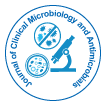

Pauline Winnie Orondo
Homa Bay County is a semi-arid malaria endemic region with a mixed irrigation system. Malaria vectors comprise An. gambiae s.l. and An. funestus. Malaria control in Kenya primarily relies on insecticide treated nets, however, in 2018 indoor residual spraying (IRS) using Actellic®300SC an organophosphate was implemented. Malaria vector abundance has since been reduced significantly causing major shift in malaria vector species. Intensive use of insecticide based control measures may have further selected for increased insecticide resistance in the malaria vectors. The objective of the present study was to determine resistance to multiple classes of insecticide in Homa Bay, a county with mixed crop irrigation.This study determined the frequency of knock down resistance (kdr) and insecticide resistance mechanisms in An. arabiensis malaria vector. An. gambiae s.l. larvae were collected in high and low transmission zones, which are approximately 15km apart. These were reared and subjected to standard WHO bioassay test against deltamethrin and melathion. Species identification (n=181) indicated 2.2% An. gambiae s.s. and 97.8% An. arabiensis. An. arabiensis recorded a mortality of 97.9% (n=324) in high transmission zone and 83.9% (n=114) in low transmission zone against deltamethrin, whereas both high (n=104) and low transmission zones (n=103) recorded 100% mortalities against melathion. The frequency of kdr-east was observed to be 0.01 (n=79) and 0.16 (n=72) in high and low transmission zones respectively, while the frequency of kdr-west was 0.09 (n=81) and 0.04 (n=58) in the high and low transmission zones respectively. This suggests heterogeneous distribution of insecticide resistance. The frequency of ACE gene was observed to be zero (0) in both high (n=73) and low transmission zone (n=60). These findings provide important information for selecting appropriate insecticides for malaria vector control in an area with multiple classes of insecticide use.